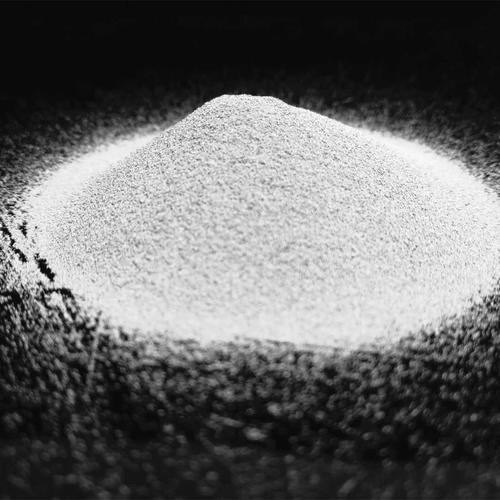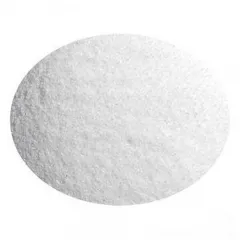1. Introduction
In the past 48 hours, a major aerospace manufacturer announced a strategic partnership with an international titanium powder supplier to scale up additive manufacturing of jet engine components using Ti64 powder—highlighting the surging demand for high-quality titanium powder for 3D printing. With this momentum, engineers, hobbyists, and procurement specialists alike are seeking reliable, practical guidance on how to work with titanium powder safely and effectively.

Whether you’re exploring titanium powder uses in additive manufacturing, comparing titanium powder price per kg across global markets, or troubleshooting storage issues with reactive forms like titanium dust, this step-by-step guide has you covered.
2. Understanding the Different Types of Titanium Powder
Not all titanium powder is created equal. Choosing the right variant depends on your application, budget, and safety requirements.
2.1. Common Titanium Powder Variants
- Pure titanium powder: Ideal for research and corrosion-resistant coatings.
- Ti6Al4V powder (also called Ti64 powder): The most widely used titanium alloy powder in aerospace and medical 3D printing.
- Spherical titanium powder: Produced via gas atomization, it flows better in 3D printers and is preferred for titanium powder additive manufacturing.
- HDH titanium powder: Made through the hydride-dehydride process; less expensive but irregular in shape—better for pressing and sintering than printing.
- Titanium nitride powder and titanium carbide powder: Used in hard coatings and cutting tools.
- TiO2 powder (titanium dioxide powder) and TiO2 nano powder: Common in cosmetics, sunscreens, and pigments—not to be confused with reactive titanium metal powder.
- Titanium diboride powder (TiB2 powder) and titanium boride powder: High-melting-point ceramics used in armor and refractory applications.
- Titanium flash powder: Highly reactive—used in pyrotechnics but extremely hazardous.
2.2. Avoiding Confusion with Similar Materials

Don’t mistake titanium dioxide (TiO2) for titanium metal powder—it’s chemically stable and non-reactive. True titanium powder (especially fine titanium dust) can be pyrophoric. Similarly, titanium-coated diamond powder is a composite abrasive, not a pure metal form.
3. How to Buy Titanium Powder Safely and Cost-Effectively
Purchasing titanium powder requires attention to grade, form, and supplier credibility.
3.1. Key Buying Considerations
- Define your use case: Is it for 3D printing, sintering, or coating?
- Check particle size and morphology: Spherical powders command higher titanium powder for 3D printing price due to superior flowability.
- Verify certifications: Aerospace or medical applications require ASTM or ISO-compliant Ti6Al4V powder.
- Compare titanium powder price per kg from multiple titanium powder suppliers. As of mid-2024, prices range from $150/kg for HDH-grade to over $500/kg for gas atomized spherical Ti64 powder.

3.2. Where to Buy
Reputable sources include international titanium powder distributors and specialized metal powder vendors. Always request a material safety data sheet (MSDS) before purchase. Avoid obscure marketplaces when you buy titanium powder—counterfeit or contaminated batches pose serious risks.
4. Safe Handling and Storage of Titanium Powder
Titanium metal powder—especially fine titanium dust—can ignite spontaneously in air. Safety is non-negotiable.
4.1. Essential Safety Practices
- Store in sealed, inert-atmosphere containers (argon or nitrogen).
- Use explosion-proof equipment in handling areas.
- Never use water to extinguish titanium powder fires—it can worsen the reaction.
- Wear PPE: flame-resistant lab coats, gloves, and respirators rated for metal dust.
4.2. Special Cases
Titanium flash powder and TiH2 powder (titanium hydride) are particularly sensitive. Handle only in controlled environments with trained personnel. Burnt titanium powder coat residues may contain oxides but are generally stable—still, treat with caution.
5. Working with Titanium Powder in Additive Manufacturing
If you’re using titanium powder for 3D printing, follow these best practices:
- Use only spherical, gas atomized titanium powder designed for your printer’s specifications.
- Recycle powder carefully: Most systems allow 2–3 reuse cycles, but oxygen content must be monitored.
- Maintain a clean build chamber to prevent cross-contamination with other metal powders like molybdenum powder or tungsten powder.
Note: While molybdenum disulfide powder (MoS2) and tungsten disulfide powder (WS2) are solid lubricants, they shouldn’t be mixed with titanium powder unless part of a deliberate composite formulation.
6. Frequently Asked Questions
6.1. Is titanium powder cheaper than titanium wire?
Generally, no. Titanium powder—especially high-purity spherical grades—costs more per kg than mill products like wire due to complex production (e.g., gas atomization). However, additive manufacturing reduces waste, offsetting material costs.
6.2. Can I export titanium powder?
Yes, but it’s often controlled under dual-use export regulations due to aerospace/military applications. Check with your national trade authority.
6.3. What’s the difference between Ti6Al4V powder price and pure titanium powder price?
Ti6Al4V powder typically costs 20–30% more than pure titanium powder due to alloying elements and stricter quality controls.
7. Conclusion
Titanium powder is a versatile but demanding material. Whether you’re sourcing titanium 3D printing powder for prototyping or evaluating titanium diboride price for industrial ceramics, always prioritize safety, supplier reliability, and application-specific specs. With the right approach, titanium powder can unlock innovation across aerospace, medical, and advanced manufacturing fields.
Our Website founded on October 17, 2012, is a high-tech enterprise committed to the research and development, production, processing, sales and technical services of ceramic relative materials such as How. Our products includes but not limited to Boron Carbide Ceramic Products, Boron Nitride Ceramic Products, Silicon Carbide Ceramic Products, Silicon Nitride Ceramic Products, Zirconium Dioxide Ceramic Products, etc. If you are interested, please feel free to contact us.
